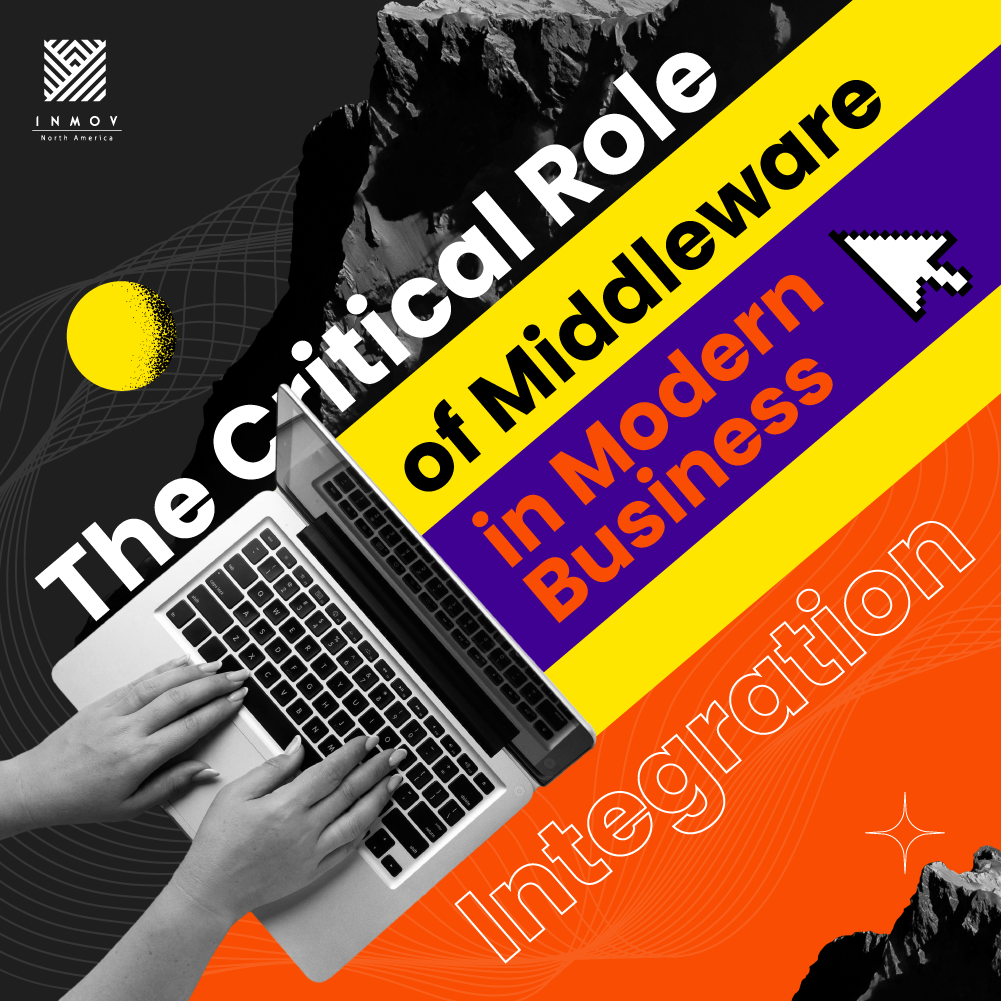- info@inmovus.com
- +1 972-640-2331
-
1111 Brickell Avenue
10th Floor. Miami, FL 33131
All rights reserved © 2024

The Critical Role of Middleware in Modern Business Integration: In the increasingly interconnected world of modern business, companies utilize a plethora of systems to carry out their operations, ranging from renowned ones like PayCom, Salesforce, and NetSuite, to lesser-known or custom-developed solutions.
As companies evolve, these systems form an ecosystem of legacy systems, each serving a distinct purpose. Yet, the real magic happens when these systems are effectively connected, enabling seamless data flow and collaborative functionality. The tool that enables this? Middleware.
Middleware is the unsung hero of enterprise system integration, acting as a bridge connecting disparate systems and enabling them to communicate effectively. Middleware software can be an integral part of an existing system, provided by external vendors, or even custom-developed. Its primary function is to establish and execute workflows that facilitate integration tasks.
However, one of the most common pitfalls companies face is underestimating the significance of middleware. They often assume that the primary task of middleware is merely to connect systems, with the configuration of activities handled within the systems themselves.
This misconception leads to a cascade of problems, as the middleware’s function extends beyond just connecting systems – it governs the entire interplay between them.
Take, for example, the case of a client integrating Salesforce, SAP B1, and Shopify. The middleware they were using was Business Process Automation (BPA), a product developed by an independent company and later acquired by SAP. SAP recommended this middleware to its clients due to its user-friendly interface for designing workflows.
However, finding qualified BPA support professionals was a challenge. Without the necessary expertise, BPA became a black box that processed information with minimal control over configuration and parameters. The client was only able to stabilize their system after finding a BPA expert based in England.
Moreover, not all middleware are created equal. They vary in terms of compatibility, performance, and scalability. In another instance, a client wanted to connect a mobile app to NetSuite but faced stability issues due to the data volume.
Despite trying multiple out-of-the-box middleware tools for NetSuite, none could handle the data load without crashing. The solution? A custom-built middleware architecture that was designed to manage the data volume and ensure stability.
In conclusion, the choice of middleware is not a decision to be taken lightly. It can have far-reaching implications on the efficiency and effectiveness of your business operations. Whether you choose a built-in feature of your existing software, an external off-the-shelf middleware, or decide to build a custom one, it’s critical to ensure you have the right resources to manage it.
Remember to run proof of concept (POC) testing to confirm the middleware serves your goals. If you face challenges, consider developing your own middleware architecture. At Inmov North America, we specialize in providing middleware solutions tailored to your specific needs. Contact us today to discuss your integration challenges and let us help you build an efficient, interconnected business ecosystem.